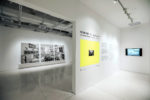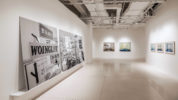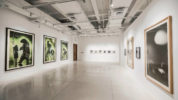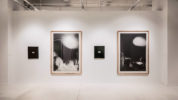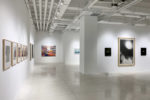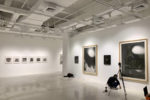ICICLE SPACE, Shanghai
Solo show, 12/5/2020-1/31/2021
“Burning with Desire”
In an 1828 letter to his partner, Nicéphore Niépce, Louis Daguerre wrote, “I am burning with desire to see your experiments from nature.” Here, what he longed for was photography. In the summer of 1827, Niépce shot the scenery outside the window in natural light with hand-made photographic plates which were coated with the mixture of wax and asphalt. After eight hours of exposure, he got the first photo in human history called View from the Window at Le Gras.
Although this photo is not as clear as the one taken by Daguerre in 1839, its significance lies in that the dream to copy real things by mechanical technology that a large number of scientific researchers had been fighting for in those days, seems to be possible. This photo leads human beings to a new world. From then on, their cognition of surroundings no longer depends on magic, but on imagination based on reality. The images that originally exist in camera bellows are shown to the public, serving as the carriers of information which can be spread every corner of the globe; meanwhile, their edition and extraction of the real world have fragmented our cognition, thus changing our consciousness imperceptibly and thoroughly.
It is probably the magical power of photography that makes Daguerre burn with desire. The metaphor of burning desire refers to both technology and mankind’s cognition – human’s keen desire to imagine realistically. Driven by such a desire, we, human beings, have witnessed a great leap of images, such as portraits, films, pictorials, television. Within less than two centuries, we are now surrounded by images. Our cognition also keeps changing in the world of images. Images are the important channels of communication in daily life and work, a medium to know the real world, and even to a certain extent, the virtual substitutions of real objects. Nowadays, we are more convinced that viewing images is to see the world itself, rather than to observe and learn about the world through images. Due to the blind worship of technical images, people have been gradually reduced to their slaves who copy and imitate the images during their production and dissemination. The image is no longer a medium to help human beings to understand the world, but a tool to control people.
Today, standing at the crossroads of seeking for photography, we have to reconsider its true meaning, and the relationship among photography, human beings and the world. In my point of view, Yuki Onodera’s exhibition aims to encourage people to face up to the questions mentioned above. The exhibition starts with Niépce’s View from the Window at Le Gras, which draws people back to the world of photography; and then, constructs a network with a large number of photographic works. Immersing ourselves in it, we can feel the relationship between human beings and photography, or photography and the world. If Daguerre’s desire in 1828 is to develop a technique and narrate history with images, the desire inspired by Yuki Onodera’s exhibition, in the era of image-dominated worship of technical images, might be something that requires recognition of images and reorganization of relations among human beings, photography and the world.
Curator: Lin Ye
One of the important propositions of Yuki Onodera’s artistic creation is to trace and re-examine the history of photography. In this solo exhibition, five series of her works will be displayed, namely, The World Is Not Small — 1826, How to Make a Pearl, Look out of the Window, Portrait of Second-hand Clothes, as well as Annular Eclipse. All of these have shown the relationship between image cognition and people, and the world from various angles.
The World Is Not Small–1826, How to Make a Pearl, Look Out the Window, Portrait of Second-hand Clothes, Annular Eclipse
